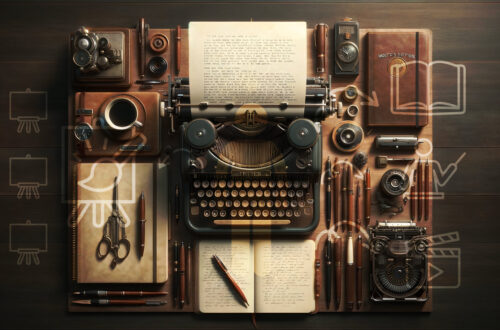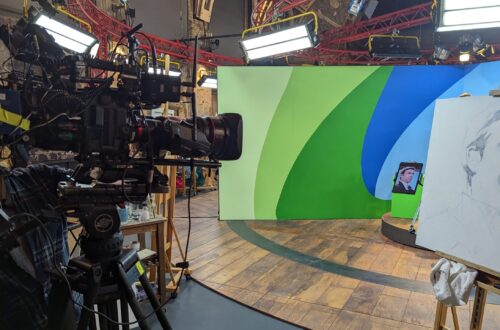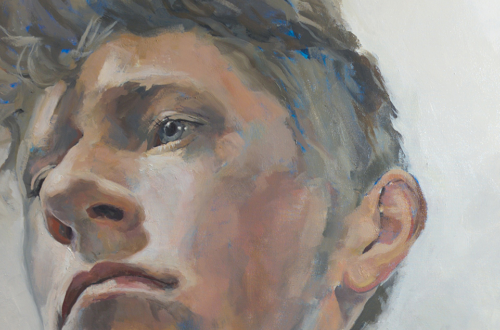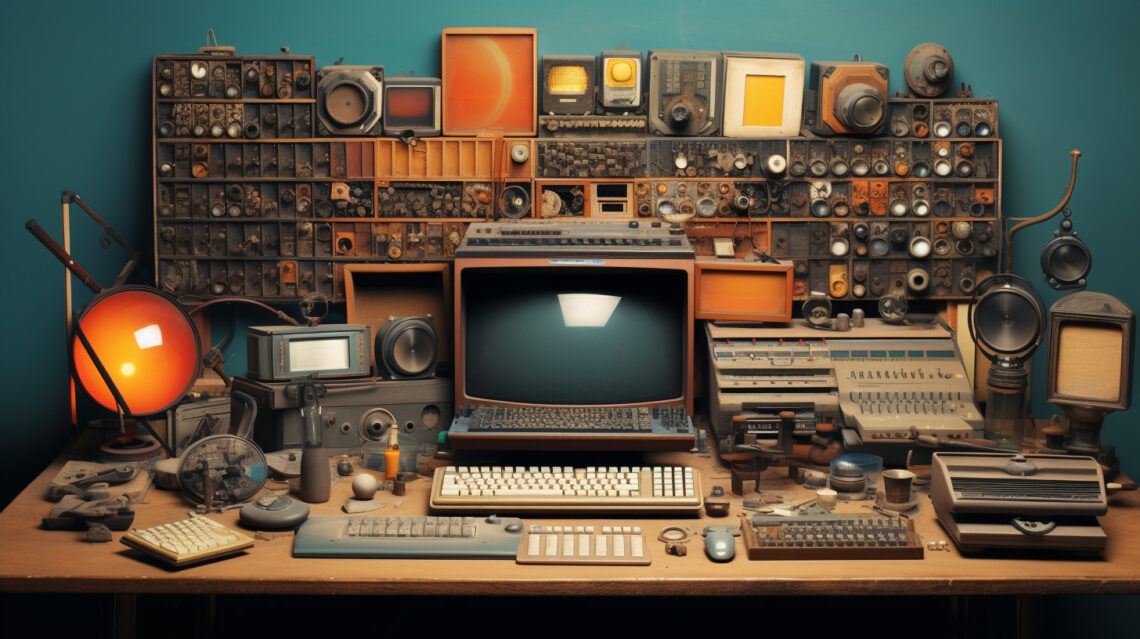
Visual Artists Should Learn to Love AI: Here’s Why
So no one (almost no one) really expected AI to impact on art and artists so quickly. In all honesty I have to admit that I was complacent about the impact and potential of these technologies for my own practice. Then I stopped using it to create photorealistic dogs in space helmets and started using it as part of my creative process. It has revolutionised how I tackle concept development and it could do the same for you.
Let’s get right down to the nitty gritty before reflecting on the pros and cons. How am I using AI in my process? that’s the conversation I’m having most often with other creators. The answer is in a number of ways but mostly for supporting my creative process and ideation.
What AI tools am I using?
Midjourney is my tool of choice but I’m still starting my ideation drawing on paper with notes and scribbles of course because you still need the idea right? Bear that in mind here, AI tools are not providing you with a list of meaningful ideas from nothing. Now I love chatGPT and when it comes to drafting long and complicated text responses its almost always useful. I’ve tried to squeeze some creativity out of it though and it struggles.
Even when I feed chatGPT some themes and a framework for how those themes should interact it does not do very well. I’m open to the fact that my prompt writing may not be the best and I’m sure that given enough time to interact with it I could get something. So far I’ve not managed to get anything out in the way of themes or even enhancement to given themes that is usable. The responses are often predictable or so random as to be unusable.
Why Midjourney is so useful
By contrast Midjourney is very useful for exactly this purpose. Maybe that’s because it is a visual ‘thinker’. Maybe I am expecting too much of chatGPT when it comes to creativity. It’s a language tool after all and not a visual engine.
If you’ve never used Midjourney I would strongly encourage you to give it a try. When used in conjunction with your own created (and uploaded) visual stimulus it can produce imagery that really evolves a concept. There is a note of caution here however. If you upload images to Midjourney as I understand it, they become part of the ‘training’ content for the AI. Your images may well be used to fuel someone else’s idea. If this bothers you maybe AI use is not for you. We’ll talk more about this later.

It takes some practice, and some (not to be under-estimated) skill with prompt writing to get useful content from any AI tool. Midjourney is certainly no exception. It will produce imagery that is very distinctly ‘AI’ looking if you are not careful with your prompts. This might not bother many people who just want a cool looking picture. If you care about the quality and originality of your imagery though you’ll soon realise that practice is required.
This reminds me of the early days of Photoshop when lots of people would use filters in a very obvious way and there was little crafting of the images. This led to a lot of digital work having a certain look to it. AI work can be the same if you are not careful.
An AI workflow for better results
What exactly are the steps that I take when using AI then? This is what my AI enhanced workflow has become:
- Start with ideation drawing in my sketchbook

- Scan those sketchbook drawings and start working in Photoshop to inject rough colour and form to create a digital rough cut of the idea

- Upload rough cut images to Midjourney and combine them with carefully crafted prompts to get some AI enhanced imagery

- Upscale any useful images and take them back into Photoshop for deconstruction and re-construction
- Use a ‘final’ image as inspiration for a painting
It’s important to mention here that I don’t always use AI. Portraiture for example has little use for AI generated imagery in my opinion. It is useful for a certain type of work but I find AI portraiture to be a strangely hollow experience.
What about the ethics of AI?
So that’s my AI workflow. I freely upload my images knowing full well that they are being used to train the engine and I’m fine with that. I’m happy that I am opting in to that.
It would be neglectful not to mention the perceived ethical issue. AI is getting a lot of peoples backs up. Maybe they have a point and there seems to be no easy way to stop AI bots from scraping your web published content. So there does not yet seem to be an effective opt out of becoming a source of visual training information. I can understand why that might be a worry for people who make their living from their images.
On the other hand I’ve seen it argued that style is not something can be copyrighted. Midjourney (and other visually trained AI tools) are sampling style, mark making, film characteristics, lighting, colours and textures from a very large pool of visual image data. They are not copying images. This is the most important distinction and a point that leaves me happy for my own created imagery to be used as part of the training…but I’m not relying on it to make a living.
What are the specific benefits of using AI?
The example images above show you how an image can develop from a combined approach. I hope what I’ve illustrated above gives you a clear enough idea of how the ideation process can be enhanced but just in case it’s not obvious here are the benefits of AI workflow as I see them:
- The speed of variation production. Being able to generate and re-generate compositional variations in minutes is a massive workload boost. This can take a long time especially before coffee. With Midjourney I can re-compose in detail many times in minutes.
- Recompose to different aspect ratios. Being able to change image shape in production and view contrasting results as you ideate. You can do this on paper of course but generating more finished imagery in different aspect ratios is a bonus.
- The introduction of accidental elements that work. Sometimes because it just doesn’t understand what you mean and sometimes because it just seems able to read your mind.
- It feels like a conversation. When the process is going well it feels like a conversation with another artist who actually understands your work.
- Simulated lighting and prop setups that would be practically unfeasible. Of course we don’t need reference for everything…only most things. But the time and money saved by being able to vary the lighting without having to actually move anything.
There is occasionally a moment when I feel like I’m making the bot understand what I’m looking for. A moment when I get that prompt and image combination just right and the work evolves in a way that one brain alone would never have thought of. That’s what makes AI irresistible for me.
When the process works well all of these things come together to push the work into areas I hadn’t considered. It can be quite revealing.
Should you learn to love the machine?
After months of using this tool now and exploring what it can do, I cannot see me devolving my practice back to what it was before. My feelings about it are quite definite now. This Pandora’s box has opened and these tools are not going away. We have to embrace them, assimilate them into our practice and continue to show the value that a human hand can bring to the creation of art.
There is a creative skill to be developed in the use of AI tools. They do not do the job for you in any meaningful way without human interaction, selection, interpretation and application of concepts in the real world. We still need someone to get their hands dirty. We still need creators to link together disparate elements in a way that is meaningful to other humans.
I didn’t set out to re-assure you that it will all be fine and AI generated visuals are not going to have a massive impact. It has already changed the visual scene irrevocably and it’s hard to predict where it’s going to go next. Remember though that we once felt like that about photography.


